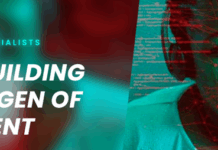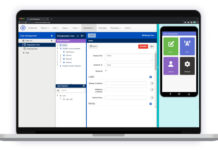The next generation of consumer classification
New market segmentation, ‘Mosaic’, offers a common customer language to define and engage consumers with relevancy
Cape Town, 16 March 2017 – Mastering a dynamic brand and customer connection is critical in the digitalised environment where customer experience has replaced customer loyalty as the key focus of organisations. This is according to leading global information services company, Experian South Africa at the launch of its new consumer segmentation system, ‘Mosaic’, which classifies the South African population and enumeration areas into 36 unique types and 9 overarching groups.
“Traditional customer-centric strategies in fast moving industries such as banks, financial services, telecommunications and retail are being disrupted by data and the speed at which it is becoming available,” says Simon Russell, Managing Director of Experian South Africa. “Organisations need to be more agile and personable with consumers by transforming insights into relevant customer engagements. Those that undertake a one-size-fits all approach are at great risk of being left behind.”
This is an emerging concern amongst C-level decision-makers in South Africa as reflected in the recent “Winning the Customer Era” study by Forrester and commissioned by Experian* where it was found that 70% of respondents believe their approach to customer management is ineffective. Interestingly, 85% see the need for better customer insights and 80% for enhanced analytics as key enablers.
This is spurred by technology that has enabled greater connectivity and interaction between brands and consumers. According to technology market intelligence company ABI Research, by 2020 there will be 40 billion connected devices globally – a 167 percent increase in five years. However success can no longer be built on the level of click-throughs.
“Grouping customers together while disregarding their uniqueness is a critical mistake as what appeals to one individual may not to another,” says Russell. “Simply put, mediocre experiences are not sufficient. Organisations need to clearly define their market and customers from the start.”
“Customers expect real and authentic interactions – and for businesses, this requires a complete mind shift and greater consideration towards the customer’s preferences and desires,” says Russell.
Creating a single customer view involves collecting variable data to examine the needs and attitudes of individuals. This provides insights on how to better place engagement strategies. It directs the conversation away from the traditional view of ‘what it is’ and moves it towards ‘what needs to be done’.
“This data converted into actionable insights helps businesses engage with customers on a personalised, human-to-human level, and ultimately helps brands to boost their appeal by providing the desired experience through a tailored customer strategy,” explains Russell.
Defining South African consumers with Mosaic
Experian Marketing Solutions’ Mosaic SA is a consumer segmentation system that classifies the South African population and enumeration areas into 36 unique types and 9 overarching groups. This system provides detailed information about what drives these consumers’ attitudes and priorities, explains Riona Naidu, Head of Marketing Solutions at Experian South Africa.
Globally, Mosaic has reaped successful results for clients in 28 countries across five continents for assisting businesses with customer acquisition, management and retention.
The Mosaic South African version has been in development for the past 12 months and has included the collaboration of Experian’s global product team, the local marketing consultancy team as well as inputs from both local and international data providers.
The methodology and approach is unique in South Africa in that the Mosaic code maps client customer data and allows organisations to see an enriched view of their segment for market sizing, enabling clients to understand the size of their potential market. Mosaic also offers best-in-class local and global technology, data and analytical capabilities.
Source: Mosaic, Experian South Africa
Using this methodology, Mosaic South Africa has identified the main groups in South Africa: with ‘Blue-collar communities (25.15%) featured most prominently followed by loyal labourers (13.72%) and Young urban survivors (11.01%):
| A | Wealth to do (10.47%) |
| B | Up-and-coming (6.32%) |
| C | Township traditionalists (10.23%) |
| D | Loyal labourers (13.72%) |
| E | Blue-collar communities (25.15%) |
| F | Young urban survivors (11.01%) |
| G | State dependents (6.99%) |
| H | Rural traditionalists (3.44%) |
| I | Outskirts families (7.72%) |
“The key characteristics, behaviours and interests of consumers within each segment – as indicated by the South African group, helps marketers paint a detailed portrait of their target consumers’ preferences, habits and attitudes,” says Naidu.
Creating a consistent experience
In a marketplace where more and more brands are starving for consumers’ fragmented attention, Mosaic is able to build a consumer view to help organisations define and profile their high value customer and create strategies that will grow their consumer base and, increase engagement, and ultimately grow the business.
“Mosaic offers a common customer language to describe and engage target audiences enabling different business departments to view customers in a unified manner across the organisation. This creates consistency for customer engagement,” explains Russell.
In many organisations the various functions like marketing, product development and operations may see the same customers in very different ways. For example, marketing may focus on the customer’s socio-demographic or life stage; product by their product purchasing behaviours while operations may segment their consumers by the type of branch or store that is frequented. These views are relevant to effectively service the business function appropriately, however this can create inconsistent experiences for consumers. “Think back of a time when you had a great experience at a store but a less than favourable one at the call centre or website of the same brand. Consistency is key and Mosaic allows clients to drive consistent engaging experiences across a multi-channel environment,” says Naidu.
She adds: “This strategic segmentation tool really helps business to identify the most effective traditional and digital channels for reaching a specific customer segment and maximising the return on investment on cross-channel campaigns. It helps to define their market, develop sophisticated, relevant messaging and identify partners to collaborate with.
There are future plans to expand Mosaic’s capabilities for measuring cross-channel effects and attribution to improve the performance of the tool. All of these combined will help clients to better identify and reach their best customers in the most effective traditional and digital channels with the most relevant messages.
“Our expertise is driving engagement and the intelligence around this. We do this with insights that help to define the differences – and set our clients apart from the rest,” ends Russell.





























